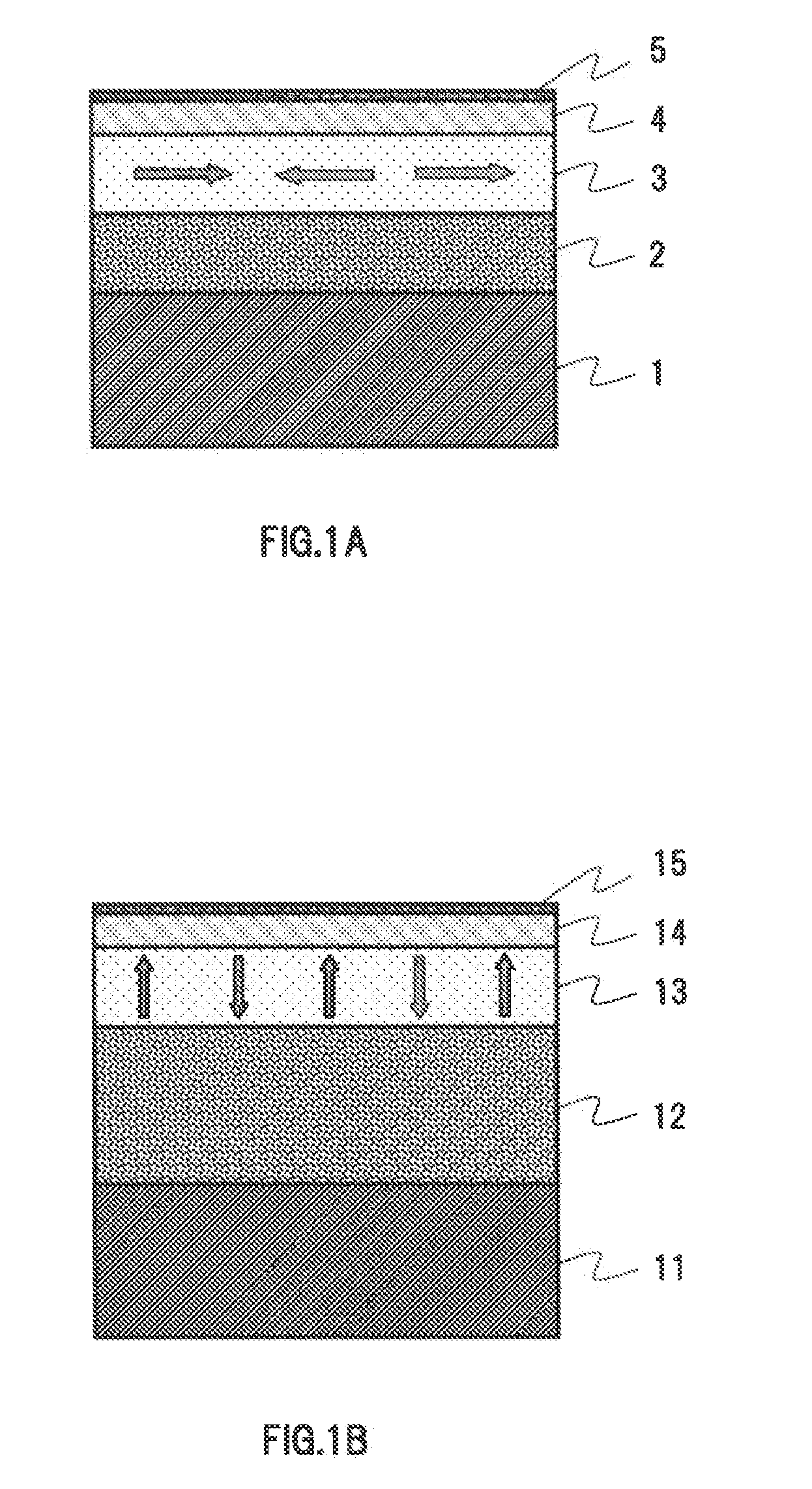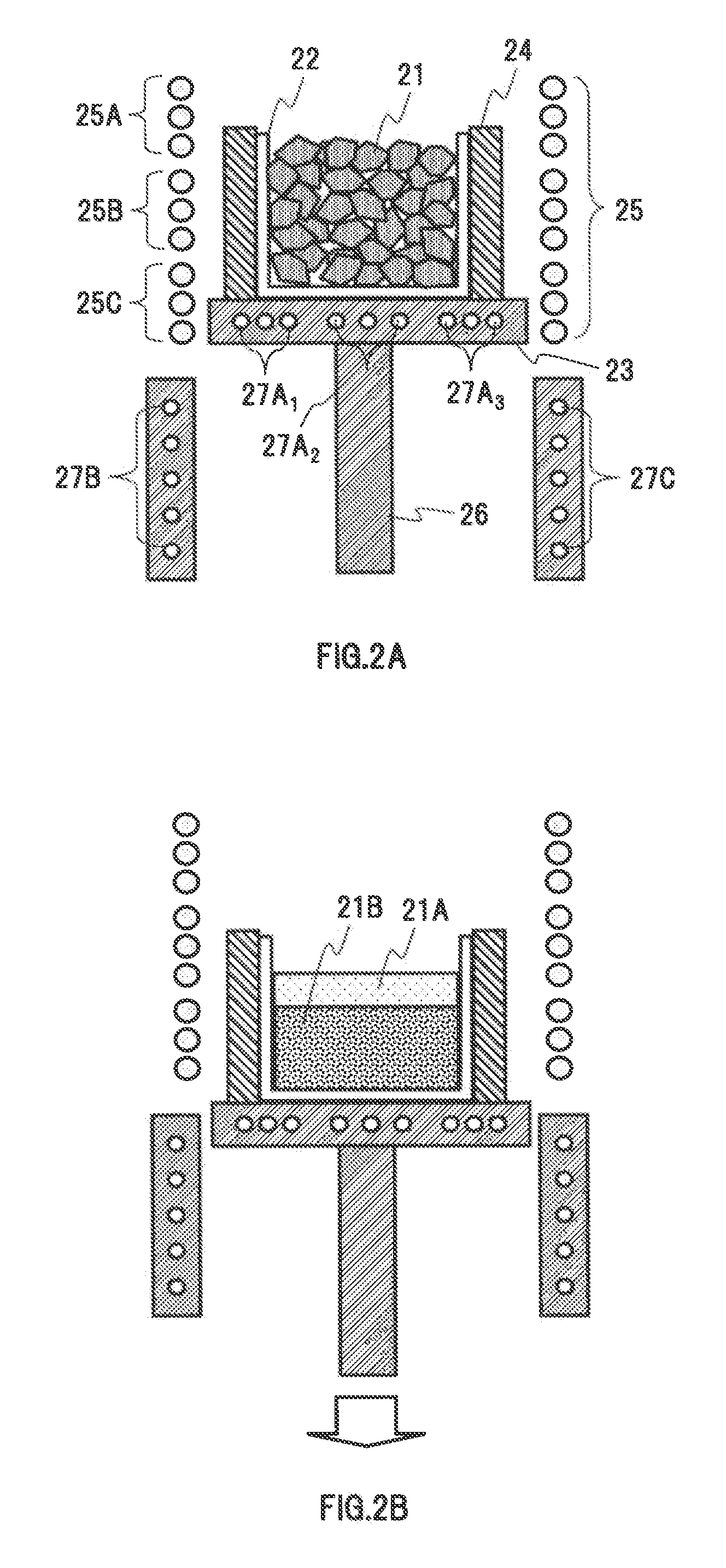Polycrystalline silicon substrate for magnetic recording media, and magnetic recording medium
a technology of polycrystalline silicon and recording media, applied in data recording, thin material processing, instruments, etc., can solve the problems of loss of recorded data, limited recording density growth, and serious heat fluctuation effect, and achieve low flying height and index dependence of polish rate.
- Summary
- Abstract
- Description
- Claims
- Application Information
AI Technical Summary
Benefits of technology
Problems solved by technology
Method used
Image
Examples
examples
[0067]Seven types of polycrystalline Si slugs were provided which were different in crystal purity and in contained impurity (i.e., dopant) from each other. Polycrystalline Si slugs of each type as raw material were put into a quartz glass crucible having a diameter of 180 mm provided in a melting furnace. With the crucible held at about 1,420° C. in an inert atmosphere, a melt of silicon was solidified at a rate of not less than 0.01 mm / min and less than 2 mm / min, to give a polycrystalline silicon ingot. Table 1 shows growth conditions for respective ingots as Examples 1 to 6 and Comparative Example 1.
TABLE 1Si purityResistanceSolidificationSamples(%)Impurity(Ω cm)rate (mm / min)Ex. 199.999B20.01Ex. 299.99P0.50.1Ex. 399.99Ge101Ex. 499.999B30.1Ex. 599.99B200.1Ex. 699.99B100.1Com.100B15Ex. 1
[0068]The polycrystalline silicon ingots thus obtained were each cut and lapped to give polycrystalline Si wafers (step S101). Thereafter, six polycrystalline Si substrates were obtained for each gr...
PUM
| Property | Measurement | Unit |
|---|---|---|
| thickness | aaaaa | aaaaa |
| thickness | aaaaa | aaaaa |
| thickness | aaaaa | aaaaa |
Abstract
Description
Claims
Application Information
 Login to View More
Login to View More - R&D
- Intellectual Property
- Life Sciences
- Materials
- Tech Scout
- Unparalleled Data Quality
- Higher Quality Content
- 60% Fewer Hallucinations
Browse by: Latest US Patents, China's latest patents, Technical Efficacy Thesaurus, Application Domain, Technology Topic, Popular Technical Reports.
© 2025 PatSnap. All rights reserved.Legal|Privacy policy|Modern Slavery Act Transparency Statement|Sitemap|About US| Contact US: help@patsnap.com



